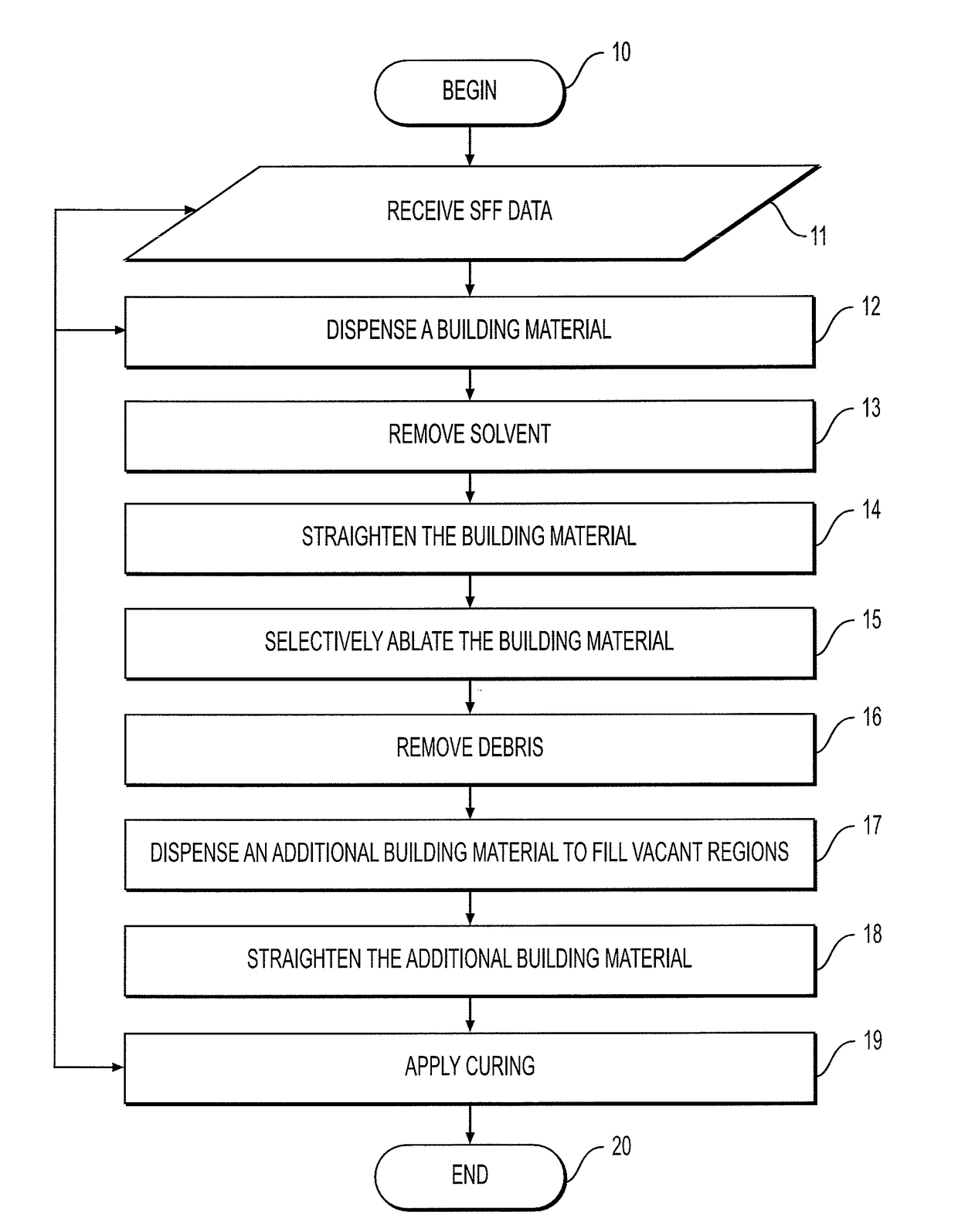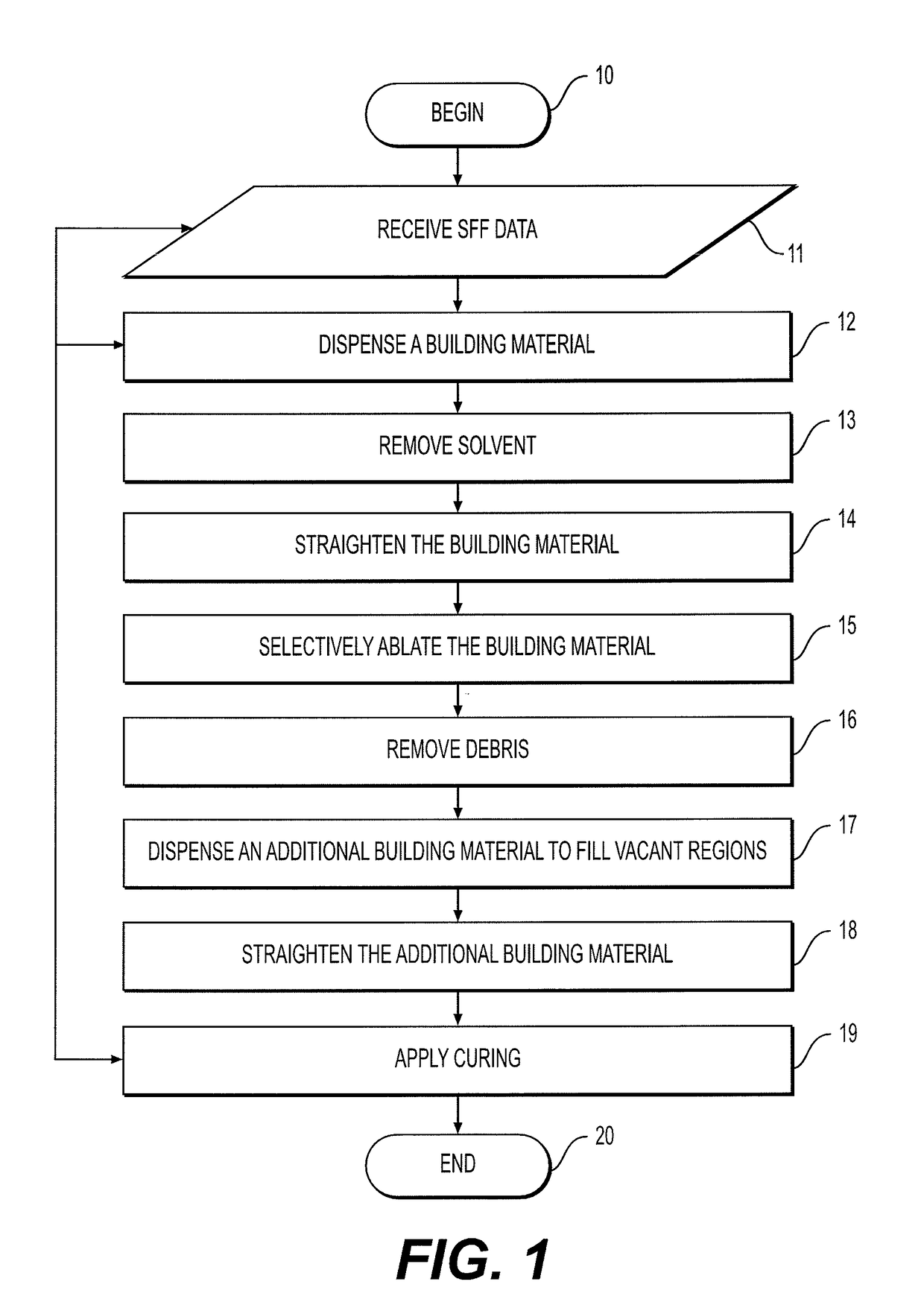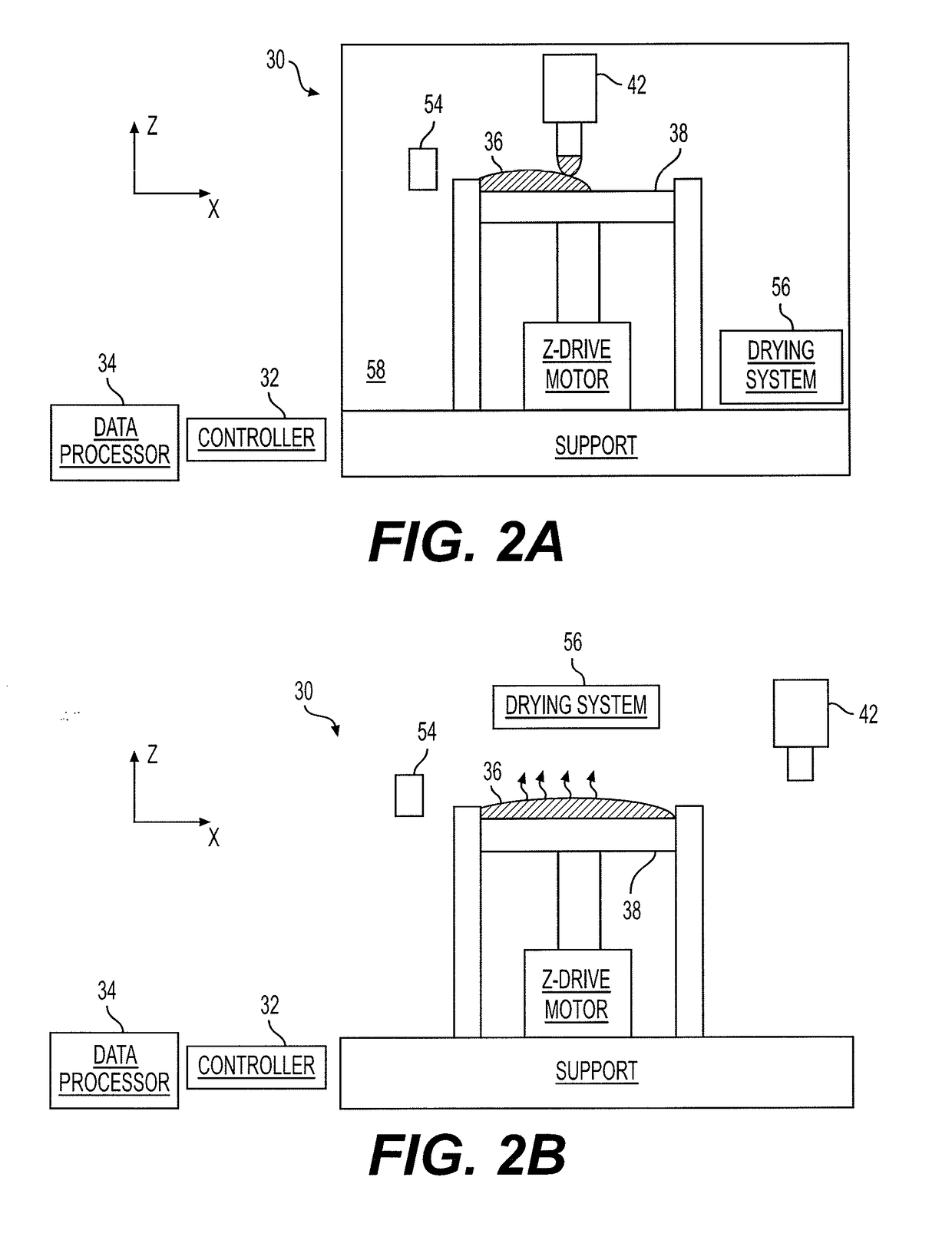Method and system for additive-ablative fabrication
a technology of additiveablative and manufacturing method, applied in the field of solid free form fabrication (sff), can solve the problems of oxygen inhibition, difficulty in reducing the resolution of viscous material with a resolution below 40 m, and difficulty in reducing the resolution of viscous material, so as to achieve the effect of preventing oxygen inhibition, preventing oxygen inhibition, and preventing the curing process
- Summary
- Abstract
- Description
- Claims
- Application Information
AI Technical Summary
Benefits of technology
Problems solved by technology
Method used
Image
Examples
examples
[0181]Reference is now made to the following examples, which together with the above descriptions illustrate some embodiments of the present disclosure in a non limiting fashion.
Exemplified SFF Process
[0182]FIG. 6 is a flow chart diagram describing a representative example of an SFF process, according to some embodiments of the present disclosure. A layer thickness is defined by vertical drive 94. Then, a material is dispensed, following by an optional drying operation. Stagnating is then applied, for example, by a blade squeegee. Thereafter, the leveled (or straightened) material is ablated to form a two-dimensional pattern. Optionally, the material is then cured or sintered. An additional straightening operation can optionally executed following the curing or sintering. The process then loops to the first block for defining the next layer.
Exemplified Placement of Foreign Element
[0183]FIG. 7 is a flow chart diagram describing a representative example of a process for combining a fo...
PUM
| Property | Measurement | Unit |
|---|---|---|
| thickness | aaaaa | aaaaa |
| thickness | aaaaa | aaaaa |
| thickness | aaaaa | aaaaa |
Abstract
Description
Claims
Application Information
 Login to View More
Login to View More - R&D
- Intellectual Property
- Life Sciences
- Materials
- Tech Scout
- Unparalleled Data Quality
- Higher Quality Content
- 60% Fewer Hallucinations
Browse by: Latest US Patents, China's latest patents, Technical Efficacy Thesaurus, Application Domain, Technology Topic, Popular Technical Reports.
© 2025 PatSnap. All rights reserved.Legal|Privacy policy|Modern Slavery Act Transparency Statement|Sitemap|About US| Contact US: help@patsnap.com



